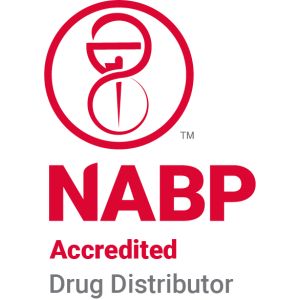Strengthening Your Sterilization Strategy to Minimize Disruptions
For four years now, medical device manufacturers have had to navigate significant and ongoing disruptions to device sterilization. Concerns over the harmful effects of ethylene oxide emissions shuttered facilities in late 2019. Suddenly, significantly reduced capacity upended production and sent OEMs scrambling for alternatives.
Despite advances and alternatives, though, there are proposed regulatory challenges on the horizon—and the forecast calls for more turbulence ahead. As OEMs know only too well, changes in a highly regulated market are often anything but easy, as there are no simple substitutions or quick fixes. It is why medical device manufacturers should be proactive in seeking alternative sterilization methods to ensure compliance and protect production continuity.
In this article, we will cover the sterilization challenges and disruptions the industry is facing. We will also explore why having an expert partner is an advantage in minimizing the business impact of current and anticipated regulatory changes.
An overview of sterilization disruptions in the medical device market
No one can point to one single factor driving disruption in sterilization for medical devices. Certainly, the ongoing concerns and heightened scrutiny of ethylene oxide (EO) is a key factor. When the controversy over EO erupted in 2019, it was already a well-established sterilization method, accounting for as much as 50% of sterilizations for more than 20 billion medical devices manufactured in the US each year. The closure of key facilities like Sterigenics created an immediate shortage of EO sterilization services.
But it’s not just EO that’s to blame. Just months later, the COVID-19 pandemic created increased demand for sterilization and PPE, bringing increased pressure on already weakened supply chains. Additionally, disruptions in other sterilization methods like gamma have compounded the industry’s challenges. Ongoing shortages of sterilant and packaging, as well as the increasing complexity of medical device designs and material compatibility concerns, only ratchet up the pressure. Now, proposed changes to the National Emission Standards for Hazardous Air Pollutants (NESHAP) for EO on the horizon may result in further closures and shortages.
As a result, sterilization contingency planning has become an increased priority for OEMs. OEMs must carefully source and evaluate alternative sterilization methods, along with the necessary validation requirements, to ensure their products continue to be available on the market. Even if it appears that impending sterilization shortages may not disrupt production or delay product launches, it is critical to be proactive to react quickly to any future disruption.
Assessing and managing risk in sterilization strategy
The first step in strengthening sterilization strategy is to conduct a thorough risk assessment related to current sterilization methods and suppliers for planned product launches and legacy production. This will help OEMs identify potential disruptions, evaluate their impact on production, and determine viable mitigation strategies.
Risk assessment can include (but is not limited to):
- Assessing how proposed changes or possible closures will affect current suppliers and their sterilization capacity
- Determining resiliency and redundancy of current supplier network and considering diversifying to counter the risk of disruption
- Identifying products without an alternative sterilization method
- Evaluating how changes in sterilization methods could affect planned product launches and impact existing production lines
Any changes to sterilization method can be fraught with risk, from material compatibility with sterilization method to unexpected delays in product launches resulting from revalidation timelines. When time is money, uninterrupted production—with assured quality and safety—is an imperative.
This is why partnering with an expert in post-manufacturing and aftermarket services with a specialty in sterilization testing gives OEMs an advantage. Such a partnership with a single expert point of contact has several benefits to OEMs, including:
- Understanding how current and anticipated disruptions can or will affect production
- Identifying existing and emerging risks in the supplier network to build resiliency
- Ensuring compatibility of technology and materials with alternative sterilization methods
- Moving into the future of established sterilization methods, like EO optimization that preserves capacity
Accelerating completion of new sterilization validations
Sterilization testing and validations have the potential to make or break product launch and ongoing production timelines. An expert partner, though, can speed completion of required sterilization testing and validations through:
- Thorough and expert evaluation of potential sterilization alternatives, including material compatibility and likely product effects of highest radiation dose
- Rapid turnaround times for required tests
- Connection to a robust network of reliable suppliers, pre-vetted for capacity and quality
Millstone’s industry-leading turnaround times for sterilization tests include:
- EO Residuals: 5 to 10 days
- Particulate Testing: 5 to 7 days
- Cytotoxicity Testing: 5 to 7 days
- Bioburden Testing: 7 to 10 days
- Product Sterility Testing: 18 days
When it comes to keeping your product on the market, it’s critical to have a plan in place for sterilization disruptions. With proactive sterilization contingency planning, you will be better prepared to navigate changes and react quickly while minimizing the threats to business continuity.
Millstone Testing Services give medical device manufacturers access to the comprehensive product, packaging, and environmental testing service expertise they need with a single expert point of contact. In addition, Millstone’s end-to-end Tier 1 service, available with adjacent testing, provides a streamlined approach to expert sourcing, with contract manufacturing, quality critical inspection, in-process testing, cleaning, packaging, and sterilization handled under a single PO. Millstone Testing Services are also available as standalone contract services.
Today Millstone offers post-manufacturing and aftermarket services to more than 50 customers, including some of the top 10 orthopedic companies in the world. We are constantly evolving our processes and services to help OEMs achieve sustainable success. We offer clean room packaging, medical device specific warehousing, finished goods distribution, loaner kit management, advanced inspection and testing, and reverse logistics services—all with an unparalleled focus on quality.
What could we help you do better? Learn more at https://millstonemedical.com.
Comments are closed.



